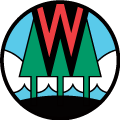Tracking, assessment and monitoring wetlands
New Wetland Rapid Assessment Tool Available
The DNR, as part of the Minnesota - Wisconsin Wetland Functional Assessment Initiative, has produced a draft rapid wetland functional assessment tool that can be used in Wisconsin for wetland permitting, conservation and planning purposes as applicable. This initiative included DNR, Minnesota Board of Water and Soil Resources (BWSR), Minnesota Pollution Control Agency (MPCA), Minnesota Department of Natural Resources (MDNR), Environmental Protection Agency (EPA), and St. Paul District Army Corps of Engineers (Corps). Technical experts developed an updated assessment tool using the best available data sources and field review methods to rapidly evaluate wetland functions. Now called the WiRAM (Wisconsin Rapid Assessment Method), the draft assessment excel tool, the draft user guide, and the draft science support technical guidance are all available to the public. DNR plans to accept WiWRAM wetland assessments for permitting purposes starting in the growing season 2026 and will continue to accept assessments completed using the current DNR WRAM (Version 2.0, 2014) until the end of 2026. During this overlap period, DNR plans to schedule a variety of technical trainings for WiRAM users. Your input on the new assessment tool, user guide, and technical guidance is welcome. Please send any comments or questions to Allissa Reynolds.
Wisconsin has lost about half its wetlands in the last two centuries. Today, citizens want to prevent the destruction of wetlands and restore wetlands where possible. Many also are concerned with the quality of our remaining wetlands and those we restore. Do they have diverse plant communities that provide good habitat for animals? Are they free of toxins and pollutants? Can they maintain their quality and function over time?
Planners need to look at the big picture when making decisions about wetlands. What role do wetlands play in the watersheds and landscape for fish and wildlife habitat, flood storage and water quality protection? How can municipalities plan for growth so that they retain the value of the wetlands that are left? How and where can wetlands be restored to get the "biggest bang for the buck?"
Monitoring wetlands to assess their biological health and the services they provide can help to answer some of these important questions and provide information for good decision–making.
- Wetland dashboard – This dashboard tracks activities that affect wetlands, both positively and negatively.
- Assessment methods and tools – Assessment methodologies that the DNR and others have developed to assess the health of wetlands and the services they provide.
- Reports & maps – Reports on assessment projects that DNR and partners have developed to date.
